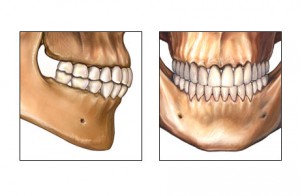Occlusion, in a dental context, means simply the contact between teeth. More technically, it is the relationship between the maxillary (upper) and mandibular (lower) teeth when they approach each other, as occurs during chewing or at restThis is also known as “bite.” Perfect bites are rare. Most people have some form of malocclusion (“poor bite”). Orthodontists use braces and other tools to move teeth into a better and more normal occlusion, or alignment.
Malocclusion is the misalignment of teeth and jaws, or more simply, a “bad bite”. Malocclusion can cause a number of health and dental problems.
Static occlusion refers to contact between teeth when the jaw is closed and stationary, while dynamic occlusion refers to occlusal contacts made when the jaw is moving. Dynamic occlusion is also termed as articulation. During chewing, there is no tooth contact between the teeth on the chewing side of the mouth.
Centric occlusion is the occlusion of opposing teeth when the mandible is in centric relation. Centric occlusion is the first tooth contact and may or may not coincide with maximum intercuspation. It is also referred to as a person’s habitual bite, bite of convenience, or intercuspation position (ICP). Centric relation, not to be confused with centric occlusion, is a relationship between the maxilla and mandible.




